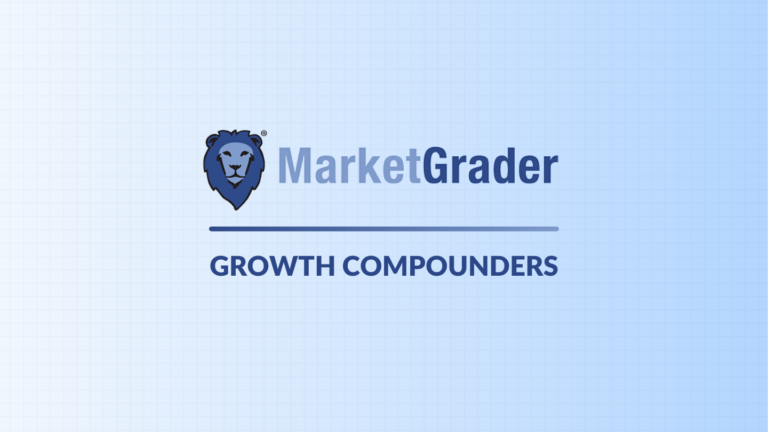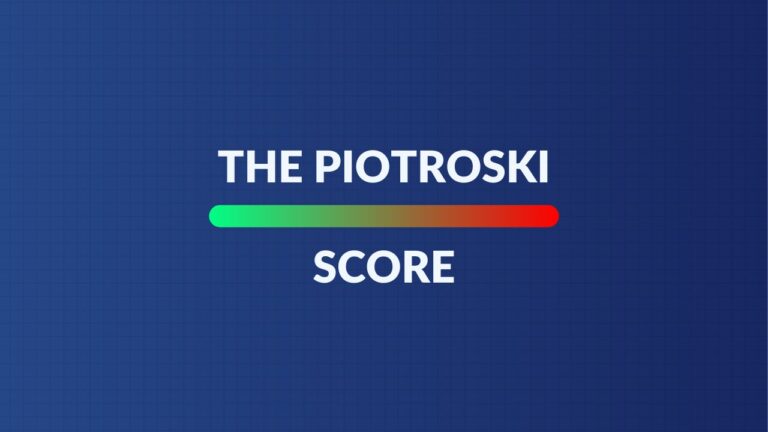
Snowflake (SNOW) – Earnings Review – December 1, 2023
Snowflake serves as a unifying layer of disparate data sources. It provides scaled storage and organization, as well as insight gleaning from that data in a secure environment.
Demand
- Beat its product revenue guidance by 3.9%.
- Beat total revenue estimates by 2.9%.
Please note that 135% net revenue retention is still excellent. Anything above 120% is considered to be very, very good.
“I’m not going to guide to net revenue retention. We do see it stabilizing, but it could dip a little more.” – CFO Michael Scarpelli

Source: Brad Freeman – SEC Filings, Company Presentations, and Company Press Releases
Bps = basis point = 0.01%.

Source: Brad Freeman – SEC Filings, Company Presentations, and Company Press Releases
Margins
- Beat EBIT estimate by 131% and beat EBIT margin guidance by 580bps (bps = basis point = 0.01%).
- Beat $0.16 EPS estimate by $0.09; Beat FCF estimate by 27.7%.
The gap between GAAP EBIT and EBIT is related to stock compensation.

Source: Brad Freeman – SEC Filings, Company Presentations, and Company Press Releases

Source: Brad Freeman – SEC Filings, Company Presentations, and Company Press Releases
Balance Sheet
- $3.60 billion in cash & equivalents.
- $950 million in long-term investments.
- No debt.
- Share count rose by 2.9% Y/Y. It has bought back $592 million in shares year to date to offset some dilution.
Guidance
For the full year, Snowflake raised its product revenue guidance by 1.9%. It also raised product gross profit margin (GPM) guidance from 76% to 77%, raised EBIT margin guidance from 5% to 7%, and raised adjusted FCF margin guidance from 26% to 27%. All three raises surpassed analyst expectations.
“Consumption trends have improved. We are seeing stability in customer expansion patterns. Our guidance is based on observed patterns and assumes continued stability of consumption.” – CFO Michael Scarpelli
All long-term demand targets, including the path to $10 billion in annual revenue by 2028, were reiterated.
Call & Release Highlights
Snowflake 101
Snowflake’s overarching platform is called the Data Cloud. The infrastructure unlocks the ability to affordably store, organize, query and learn from data sources with gigantic scale. The architecture naturally separates the functions of data storage and computation unlike legacy data warehouse solutions. That means data consumption capacity is untethered from public computing resources. This removes the computing capacity bottleneck and enhances the scalability of data storage.
Under this framework, I can store as much data as I want without the requirement to immediately process all of that data, as legacy offerings require. Processing utilizes computing capacity. In Snowflake’s case, the storage is done in a centralized data repository in the Snowflake Data Cloud. It’s processed only as needed. Data is utilized virtually, which removes the need for dedicated hardware. This scalable or “elastic” reality limits waste and cost. Snowflake does all of this for clients in a managed fashion to diminish client talent and infrastructure needs.
5 Key Products to Know & Some Progress Reports
The Snowflake Data Warehouse is where structured data is stored and (on command) processed. Structured data is formatted data. It’s utilized for record keeping and report creation. Data can be easily fetched via structured query language (SQL).
- It just added a new data streaming tool called dynamic tables. It’s in early preview and allows for more automated data querying. With it, reports are automatically updated with current data as that data is ingested by the Data Cloud.
Snowflake Data Lake does what the warehouse does for unstructured data. Unstructured data is unformatted and used for uncovering new insights and patterns.
- This debuted in 2020 (Warehouse in 2014). Unstructured data consumption is growing like crazy. It’s up 17x Y/Y.
- Generative AI leans heavily on unstructured data for model training. This means that proliferation will directly support unstructured data consumption on Snowflake.
The Snowpark product frees developers to work with data in any source code language desired. With it, developers can process and visualize data (through Snowpark functions) and build apps (through Snowpark Native Apps). Snowpark is their data-equipped playground to build new things.
- Snowpark usage is up 47% Q/Q and 500% Y/Y (newer product).
- Snowpark Container Services will be soft-launched in Q4. This allows clients to deploy software containers (software packages) from Snowflake. That, in turn, enables the running of applications without needing to transfer data or manage deployment.
- GenAI models are voracious data consumers. Snowpark Container Services allow GenAI models to run closer to the data that they require. This enhances performance and expedites model training. Snowpark Container Services is a key part of the firm’s GenAI strategy.
Snowflake data sharing is its secure product for, as the name indicates, sharing data among the rest of Snowflake’s participating users. As more opt in, a compelling network effect of relevant data builds and Snowflake’s value proposition deepens.
- 28% of its customers are now sharing their data amongst the Snowflake network vs. 22% Y/Y.
- Sharing is done via “edges” which are data sharing connections between clients and a data provider.
Snowflake Machine Learning is its suite for training ML models within the Snowflake Data Cloud. This can be used to automate data querying and organization.
Snowgrid is its omni-cloud tool to unite a client’s data across the various clouds they use.
Revenue Generation
This is not a recurring revenue business model like a CrowdStrike or ZScaler. About 90% of its revenue is recognized based on consumption levels with contractual minimums offering a tad more revenue visibility. The consumption-based model means that clients can more easily flex down data consumption during tough times than they can with subscription-based contracts. It also means improvements in data consumption efficiency from firms like Amazon and Nvidia can have a negative impact on its consumption demand. This has held back Snowflake’s growth somewhat in 2023 as customers have elected to do things like move from 5 year to 3 year data storage to control costs. Optimizations like these have also stabilized.
The flip side of this? As times get better, these same clients can more easily and rapidly grow their consumption than with a subscription-based model. Because of the variable nature of this revenue generation, annual recurring revenue (ARR) is not a relevant metric here and neither are billings. It instead focuses on product revenue and remaining performance obligations.
Margin Improvements
Snowflake’s scale is helping its margin profile mightily. This is also giving it more bargaining power in cloud pricing negotiations which should only become truer over time. Operating margin specifically is also being helped by more business coming from renewals vs. new clients. This means lower customer acquisition costs and sales commissions.
Macro & Demand
Snowflake echoed the same macro sentiment that we’ve heard from nearly every other high quality software name. Macro headwinds are not vanishing and they’re not even improving at this point in time. Importantly, they’re not getting worse. “Stabilization” is a motif of this earnings season. Consumption appetite does seem to be improving as 9 of its 10 largest customers grew their consumption sequentially. Its largest customer delivered stable consumption trends as expected. This is encouraging, but not all that surprising following Amazon’s similar AWS commentary. There’s a large client overlap between Snowflake and AWS as AWS clients represent 76% of Snowflake’s business.
Strong migration activity from on-premise architecture drove the successful quarter. Its 2 fastest growing customers continue to migrate to its platform. One is in its second year as a SNOW customer; one is in its eighth year. That directly shows the long, long runway of revenue expansion Snowflake typically enjoys with customers. That’s why net revenue retention is so lofty. Notably, there was a 3 week period in September where growth was faster than at any point during the previous 2 years. That made my head turn. Growth continued into November as well. This compares very nicely to earlier in the year when leadership expressed concern over week-over-week growth halting towards the end of the quarter.
“November trends are good… Thanksgiving is typically a slow week. With that said, I’m happy with the consumption we’re seeing. That’s reflected in our guidance.” – CFO Michael Scarpelli
A subtle shot at Google Cloud
“Google Cloud Platform (GCP) is 3% of our business. One of the reasons why GCP is not as big is that it’s so much more expensive for our customers to operate in GCP vs. AWS and Azure. And as a result, our salespeople are really not inclined to do much in GCP.” – CFO Micahel Scarpelli
Generative AI
As he does every call, Slootman again voiced his view that “there’s no AI strategy without a data strategy.” He’s right. Snowflake wants to be an “AI enabler.” This means GenAI apps, models and tools can all be brought into the Snowflake environment via intuitive integrations. It wants firms to “bring their software to the data.” This frees more direct usage of a client’s data when building out all of these products. As a reminder, GenAI models must be seasoned (trained) to be worth anything. What trains those models? Data. Where do customers go to have access to all of their data in one place? Snowflake.
For example, Snowflake Cortex grants access to large language models (LLMs) (isn’t LLM Language Learning Models?) (like OpenAI’s and Meta’s) to be deployed from within the Data Cloud. It offers services like vectorization which allows for uncovering unstructured data patterns and locating similar data from those findings. It also allows for Sentiment Analysis which isolates opinion-based data to conclude how positive or negative sentiment is.
It will soon offer Snowflake Horizon to handle all compliance and governance issues within GenAI. Similarly to Zero Trust architecture, Horizon “consistently enforces user privileges on data across LLMs and GenAI apps.” It can handle some non-GenAI governance as well.
It’s also building its own GenAI tools like Document AI. Document AI turns unstructured data from documents into more structured, organized datasets in an automated fashion.
Public Sector
“We should have our FedRAMP high authorization literally any day. I actually thought I might have had it today. So stay tuned. You’ll see an announcement on that very soon.” – CFO Michael Scarpelli
Take
This was a great quarter. It is clearly becoming a de-facto data warehouse (along with Databricks) and continues to land large clients with ample revenue expansion runway. The margin expansion is encouraging, the new product traction is encouraging, the GenAI setup is exciting and the company is firing on all cylinders. We are just 6 months removed from Snowflake explicitly telling us “productivity is not where we want it to be” and that consumption headwinds were building. My what a difference 6 months can make. Great quarter for one of the most expensive stocks in public markets. It will have to keep delivering great quarters like these to continue fetching the valuation premium it currently enjoys.











